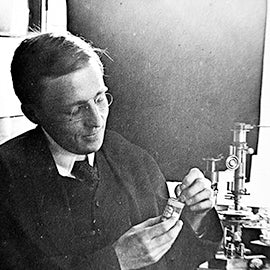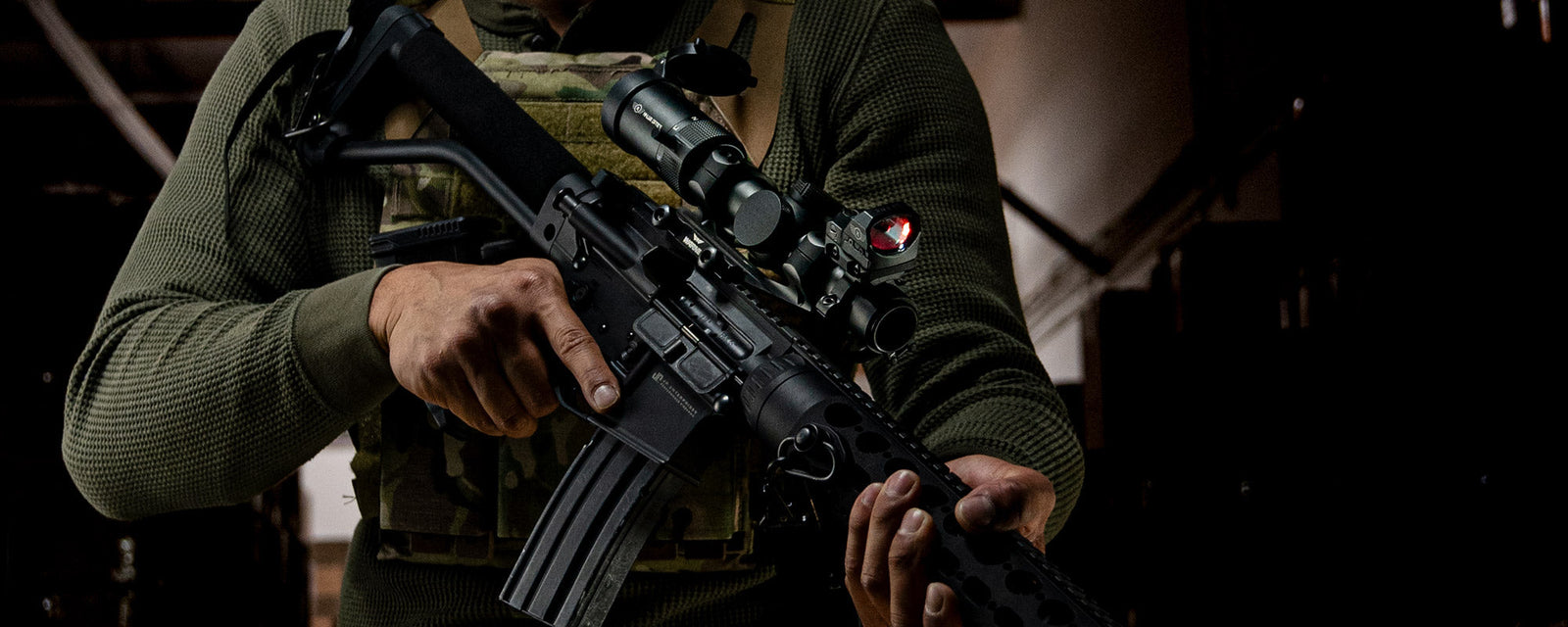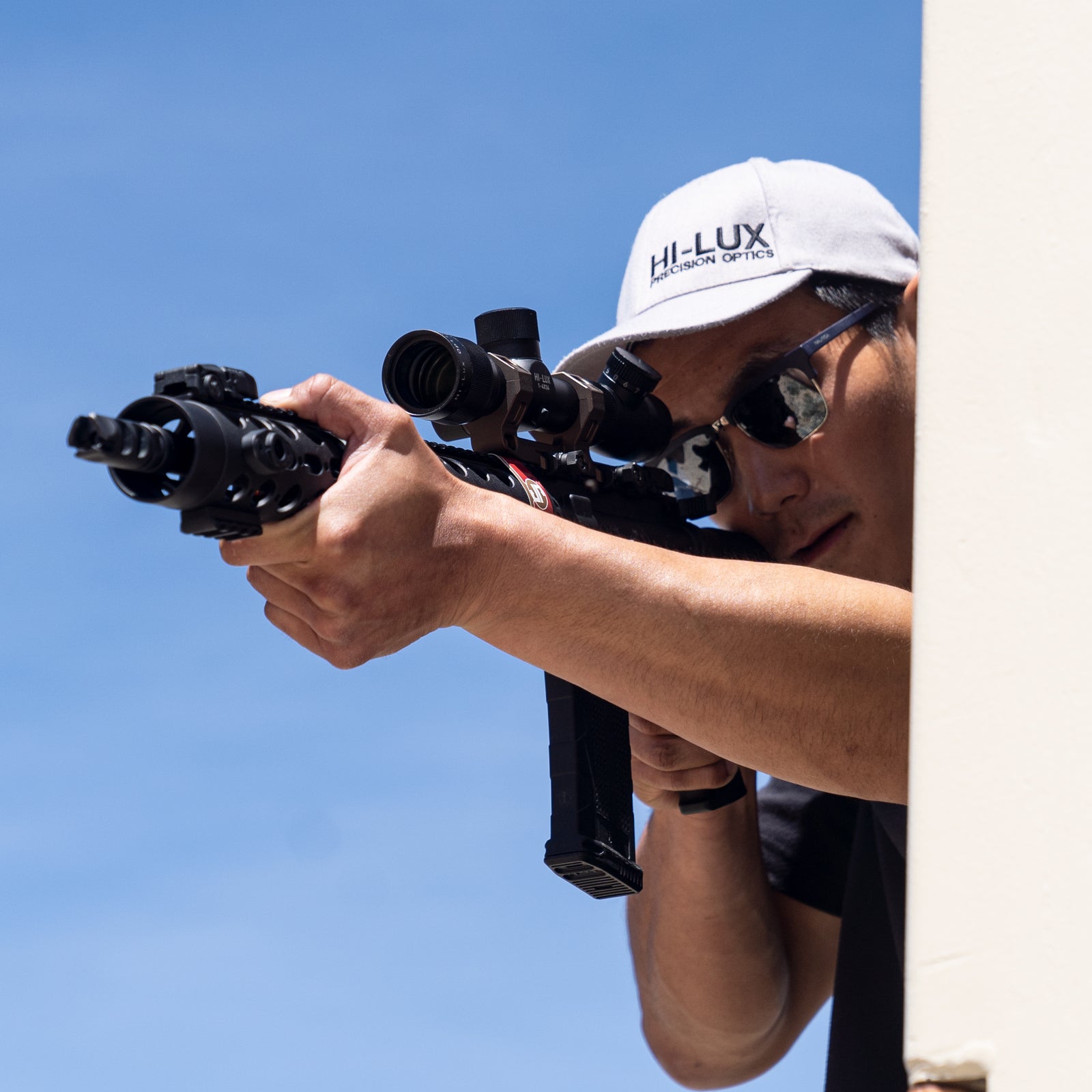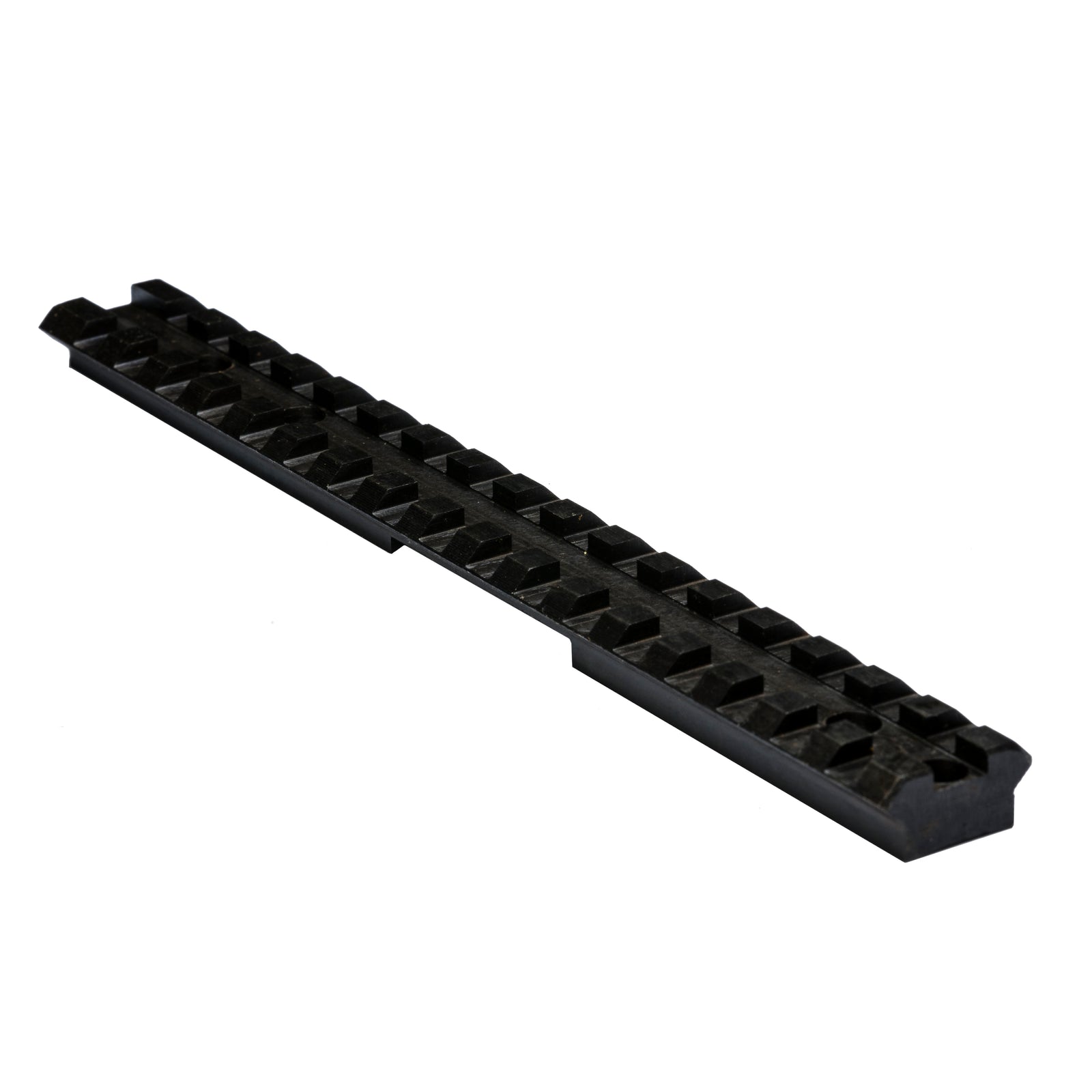The field of rifle-mounted optics began in the first month of 1776. Charles Willson Peale, known mostly for his painted portraits of revolutionary era figures, had made friends with an astronomer. He somehow decided to mount a telescope to a rifle. When he finally took it out to test with live fire, he mounted up on this new rifle scope just how you’d use a telescope. With his eye against the eyepiece, he was the first to experience scope bite. He spent the next week or so developing a spring-loaded recoil dampener for the eye. The first scope advancement, eventually, was the development of eye relief.
Largely, rifles of the time did not have the range or precision to make optics necessary. Prior to 1840, most projectiles were round balls with relatively poor range. Compounding problems, crafting the glass and scope tubes was a fairly involved process. The field of rifle optics lay pretty much unchanged for more than half a century. Finally, in 1835, a civil engineer named John Chapman brought his knowledge of surveying to the development of true rifle scopes. He developed the drawn steel tube, making the crafting of scope tubes a far sight more reliable than early brass attempts.

Though Chapman had designs aplenty, he did not want to manufacture them himself. Instead, he brought the designs to a precision rifle maker by the name of Morgan James, located in Utica, New York. With their efforts combined, the first Chapman-James scopes hit the market around 1840. They featured a fixed magnification, a narrow field of view, and fairly good glass for the time.
Glass in the early 1800s was imported from France or Britain, and helped contribute to the high cost of early scopes. In Britain, the Chance Brothers in Birmingham were large suppliers. In France, it was the company Parra Mantois et Cie. The glass was somewhat variable in quality and sharpness. The scopes built with their glass cost as much or more than the rifles they were mounted on.
The Zeiss optics workshop opened in Germany in 1846, producing high quality glass for microscopes and other scientific equipment. The glass was of such high quality that Zeiss quickly dominated the optical markets. Its secret lay in its dependable optical quality. In 1872, Otto Schott would join the company and become yet another respected name in the glass production field.
In 1853, a $60 loan had begun to change the domestic glass arena. John Jacob Bausch was running a small optical goods firm in Rochester, New York. He needed a loan, and turned to his friend Henry Lomb. As the business flourished, Lomb became a full partner.
Bausch and Lomb would not produce their own scopes until the 1960s. Between the company’s founding and the 1960s, B&L would venture into optics for the military. An 1892 agreement with Zeiss invested them even more heavily into the production of optical glass. When World War I broke out, they were the only supplier of glass for the US Military. The high-quality scientific glass they were accustomed to producing was ground into the lenses for everything from rangefinders to sunglasses.

It seems like a lot of early scope history happened in the little state of New York. Traveling a few years forward in the past, our journey continues in the town of Syracuse. There, a fellow named William Malcolm began producing his own scopes in 1855. They were generally between 24 and 30 inches in length, and 2 and 20 power. For the range of the rifles at the time, magnifications of 4 to 8 times seemed to be the most common. The tubes were ½ inch or 3/4ths in diameter, a straight length the whole way down. Objective bells would come about a little later.
Malcolm deserves a lot of credit for the introduction of achromatic glass to rifle scopes. In addition to this wonderful enhancement to optical clarity, the eyepieces were adjustable to the user’s vision. His cold-drawn steel tubes provided a great deal of structural strength. Scopes could be expected to stay on target longer. The adjustments were screw-type adjustments. A few varieties took shape - some were the expected external adjustment variety, with two screw turrets set at right angles in a surrounding ring. Other mounts might have a screw extending from beneath the rear of the scope, allowing the tube to be moved up and down. Yet others had a pair of vertical pillars that the scope tube would be positioned between. The early Malcolm Type C mount featured a rear elevation adjustment in the ‘rabbit ears’ style with a front ring that moved left and right for windage.
Malcolm scopes were among the first fielded in military service, appearing in some instances even during the American Civil War. However, it would be Warner and Swasey that would get the honor of an early military purchasing campaign. Founded in Chicago in 1880, Worcester Warner and Ambrose Swasey’s machine tool shop would eventually become well known for the quality of its telescopes, largely due to the astronomical interestests of Warner. Eventually, it would produce sights for the Springfield M1903 rifle. Swasey designed a side-mounted prismatic sight for the rifle, known by the military designation of M1908. It weighed a couple pounds, which threw off the weight of the rifle. It didn’t mount very securely, and was known to shift loose. The one inch eye relief necessitated the use of an eye cup for the recoil of the 1903. It also suffered from a fairly narrow field of view for its 6 power magnification. This problem was mitigated by the later M1913 sight with its 5.2 power. For the use of long range shooters, a dope chart was posted on a brass plate atop the scope. Between the two models, the military purchased just shy of 8000 units. More than half were never mounted on rifles. Ultimately, the Marines elected to use the W&S optics as training aids, and not for field use.
Winchester may be most famous for its firearms, but it’s an early Winchester scope model that furthered the efforts of military sharpshooting. The Winchester A5 scope was a 5 power scope of straight tube design, mounted in-line with the M1903’s barrel. Starting in 1914, the Army would test twelve Springfield rifles outfitted with the A5 scope. At this time, the scope was mounted with a little less mount spacing than we’re familiar with presently on the ‘03 - a space of around six inches. The rear of the scope hung out pretty far and was prone to damage. After further testing and evaluation, it was decided that the rear block would need to be moved above the receiver to provide a spacing of 7.2 inches, leading to adjustments of ½ MOA in that time’s rings. The rings look a little different from modern ones, with two pointed claws extending from the ring to poke against the exterior of the turrets. The turrets were pockmarked with small divots, providing stopping places for the tips of the claws. As the turrets were turned, the claws would click against the detentes.

In 1917, after a brief stint with blocks made by the Mann-Niedner team, the Marines would turn to Winchester’s #2 mounting system for a solution. The blocks were quite similar to the crescent-cut Unertl blocks we’re familiar with today, and became somewhat of a standard for future externally-adjusting scopes. Even the spacing of the M1903’s mounts, at 7 ¼ inches, became a standard for indexing other rings.
Turning away from the mechanics of scopes for a bit, it’s time to revisit the glass side of rifle-mounted optics. Glass was still being purchased largely overseas up until World War I. With the outbreak of the war, the previous supply lines with Germany evaporated. It was time for the domestic markets to step up. By the U.S.’s entry in 1917, Bausch & Lomb was the largest supplier of domestic glass, at a rate of 2000 pounds per month. It was estimated at the time that the military would need 2000 pounds per day to meet its quota. The shortfall had to be addressed. At this time, optical manufacturers other than those of the Zeiss factory in Jena treated glass making as a craft. It was estimated that a manufacturer needed 150 trial runs to pump out one good piece of glass. Even that glass was of dubious quality.

At this time there lived an avid user of microscopes. He went by the name Fred Wright, and was well known as a fellow who knew his way around glass. He had already been in contact with Bausch & Lomb in the past to arrange for the construction of more microscopes, and had a friendly relationship with them. Even better, his own lab specialized in the study of rocks and the melting of silicates - the same kind of stuff used in making glass. Similar efforts in Britain and France had begun to show success by April of 1917, but such secrets were closely guarded in war time. Frank had to apply his own technical knowhow to reversing the already-existing German processes, largely by studying Schott’s glass already in use in military optics.
It is without question that Fred’s plans succeeded. By November of 1917, just seven months after the start of his team’s efforts, the B&L plant was churning out 20,000 pounds of glass per month, of quite high optical quality. By the following March, that would become 35,000 pounds. In total, the B&L plant where Frank worked would produce 68% of the U.S. military’s wartime glass, and become firmly cemented as a producer of high-quality glass.
Founded in 1864 by Joshua Stevens, the Stevens Arms Co. would gain fame by introducing the .22 LR round and a number of shotguns, rifles, and target pistols. Finally, in 1901, the Stevens Arms Co. would begin making scopes. The later J. Stevens Arms & Tool Co. would be bought by the Savage Arms Company in 1920, merging their operations. Some firearms and scopes continued to be produced under the Stevens name, though now with Savage’s direction. The last Stevens scopes were made around 1929, when their optical interests were bought by Lyman. Many Stevens scopes looked quite similar to earlier Chapman-James models, including the screw-type adjustments set into the rear ring. Their glass, however, was made by the domestic company Bausch & Lomb. Though pricey, the Stevens scopes would be more affordable (and popular) than their earlier predecessors.
Founded in 1922, Fecker’s company drew from much of the knowledge that came before it. Graduating Cleveland’s Case School in Applied Sciences in 1912, J. W. Fecker went on to work in the optical field with his friends Warner and Swasey. Prior to founding his own company, Fecker had also worked at Bausch & Lomb. His first forays into the optics field largely followed many of these prior footsteps. The scopes had a 3/4 inch objective lens and were roughly 18 inches long. They were either 6 or 10 power. The rings for the scopes mounted onto V-shaped blocks made by Stevens or Winchester, and had a pope rib designed to work with some Stevens and Pope mounts
His largest immediate change came in the form of a mobile erector unit. Previous scopes, even including those of Malcolm design, had parallax set by the movement of the objective lens. Now the erector lens would be moved instead to set the focus.
Fecker would remain dominant in the target-shooting arena due to the quality of his scopes. Until 1924, his scopes had to use rings made by other manufacturers. In 1925, Fecker finally began offering his own rings. Together with the efforts of Donald A Baker, these rings were designed for great precision and secure mounting. Another change we appreciate nowadays, the turrets finally had internal clicks.
In 1928, Fecker hired recent immigrant John Unertl after he emigrated from Germany. For more than a few years afterward, Fecker would continue to supply optical equipment directly to shooters and to other optics companies, including his old friends Warner and Swasey. As time went on, many members of the Fecker company would leave to work on other projects. Unertl would go on to found his own company. Hageman, the chief optician, and his son Wray would later leave to work on the Lyman Alaskan, an internally-adjusted 2.5 power scope.
Lyman’s purchase of Stevens optics in 1929 moved the company from its long history of iron sights and reloading equipment to the field of optics. Conveniently for this story, Stevens had bought Winchester’s optical production not long before. Ultimately, Lyman’s first scopes used Winchester tooling, Stevens designs, and Bausch and Lomb glass, sold under Lyman’s name. Even the venerable Winchester A5 would be reproduced by Lyman under the name 5A.
This has been a rushed and rather thin look through the long and colorful history of optics design. To try and cut down on the material covered, I’ve stuck to externally-adjusting fixed-power scopes designed in the U.S… and even then, I’m sure you can see just how much there was going on. Each person involved seemed to contribute another piece to the puzzle, pushing the field forward bit by bit. After 1840, it was almost a headlong rush from the first Chapman-James scopes until the later big names of Lyman, Unertl, and Weaver. Along the way, other large names would step into the field bit by bit, before leaving or folding.
I’ll try to sum all this up as quickly as I can -
Peale proved precision optics were possible, but painful. Chapman and James championed cold-drawn chassis. Malcolm made masterful glass coatings and commercially successful scopes. Warner and Swasey’s scopes went to war, but wrestled with mechanical issues. Winchester’s scopes went to war too, but better because of better blocks. Bausch & Lomb made good glass for a while, then great glass with Zeiss’ knowledge. Stevens stuck with domestic glass and bought Winchester tooling, but was bought by Savage and then Lyman. Fecker, friend to Warner and Swasey and Bausch and Lomb, fielded fine optics, and rings with clicks. Lyman found Fecker’s opticians to be useful hires, while Unertl left Fecker on his own.
In light of all this, I will leave you with the final words of Major General John Sedgwick of the Union Army, from May 9th of 1864, which so eloquently captured the startling pace of early long-range development; “Why are you dodging like this? They couldn’t hit an elephant at this distance.”
--
We hope you’ve enjoyed this look into the world of firearms. If you’d like to view this in a different format, it’s available in other convenient locations. If you’d like to hear the podcast, you can find it at The Bullet:In on any podcasting platform. For the video version, take a peek on our YouTube or check out the video below.
Scopes have come a long way over the years. If you'd like to find out about the creation of reticles, check out our article on Spider Silk Reticles. Otherwise, it's always fun to see the tests early sharpshooters had to pass.





Lance Bridwell
November 01, 2024
i am looking for a rifle scope to put on a recently purchased Uberti 1885 stalking rifle calibered in 303 British.